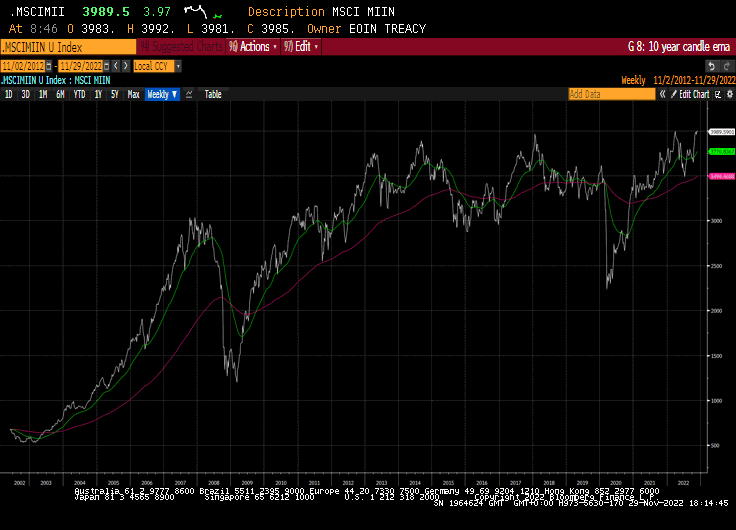Email of the day on reorienting globalisation
I see a third question more related to the protests, not COVID, and I apologize in advance for the potential false equivalency. When comparing Europe's energy situation and the global supply chain / China sourcing situation how will each unfold in future years? Certainly both are heading directions (reversing) that will not turn. Are Europe's hooks deeper into the Russian supply habit or is the global supply chain China habit even deeper?
I am most interested in the impact similarities these two withdrawal themes may have on the West, and the length of time change will take. I have long thought North America "has it all" when you look at materials, labor, and markets.
Thank you for this question which raises some important points. The conclusion that Europe is in a more difficult position than North America is clear but nothing is ever so simple.
Europe relied on Russia to supply much of its energy and much of the money spent on imports was recycled through European countries. That is over. Europe now needs to mirror the USA’s success in becoming energy-independent.
There is no way that can be achieved without nuclear energy. It’s no coincidence that Romania and Poland have been the first to sign contracts for NuScale’s small modular reactors, but they will not be delivered until 2028/2029. Europe will be importing gas by ship in serious volume for at least the next decade and more. That suggests Russia’s point of maximum influence is now and it will decline steadily from here.
Europe relies on China as an end market for many industrial, consumer, and luxury products. Whatever the potential for unrest in China, the bigger picture is the Chinese economy is rapidly moving up the value chain.
For example, most EV batteries are manufactured in China. The best the European auto sector can do is play catch up. That suggests there is no easy way for Europe to unwind its involvement with China.
This suggests China’s point of maximum influence could be now or later. The ultimate answer will depend on how the nation deals with Russia’s isolationism. China needs what Russia has and Russia is not a sufficiently large market to absorb what China exports. That’s not the basis for a long-term partnership unless Russia is willing to invest heavily in China.
It is true that North America has materials, labor, and markets. I would add it also has the military might to defend the continent and express a view overseas.
The big question is how the debt dynamics for the three regions will eventually be resolved. Aging populations and generous social provisions represent growth headwinds for most of Europe and North America. China’s growth has been driven by debt for a decade.
The global population is still expanding but it is shrinking in all these heavily indebted regions. That suggests growth and economic activity will be centred in regions like India, Mexico, Indonesia, Ethiopia, and Nigeria over the coming decades. Perhaps it is time for a new acronym (MIINE).

By creating a custom index of the average of the MSCI India, Indonesia, Nigeria, and Mexico indices we find an index that is on the point of completing a decade-long range.


